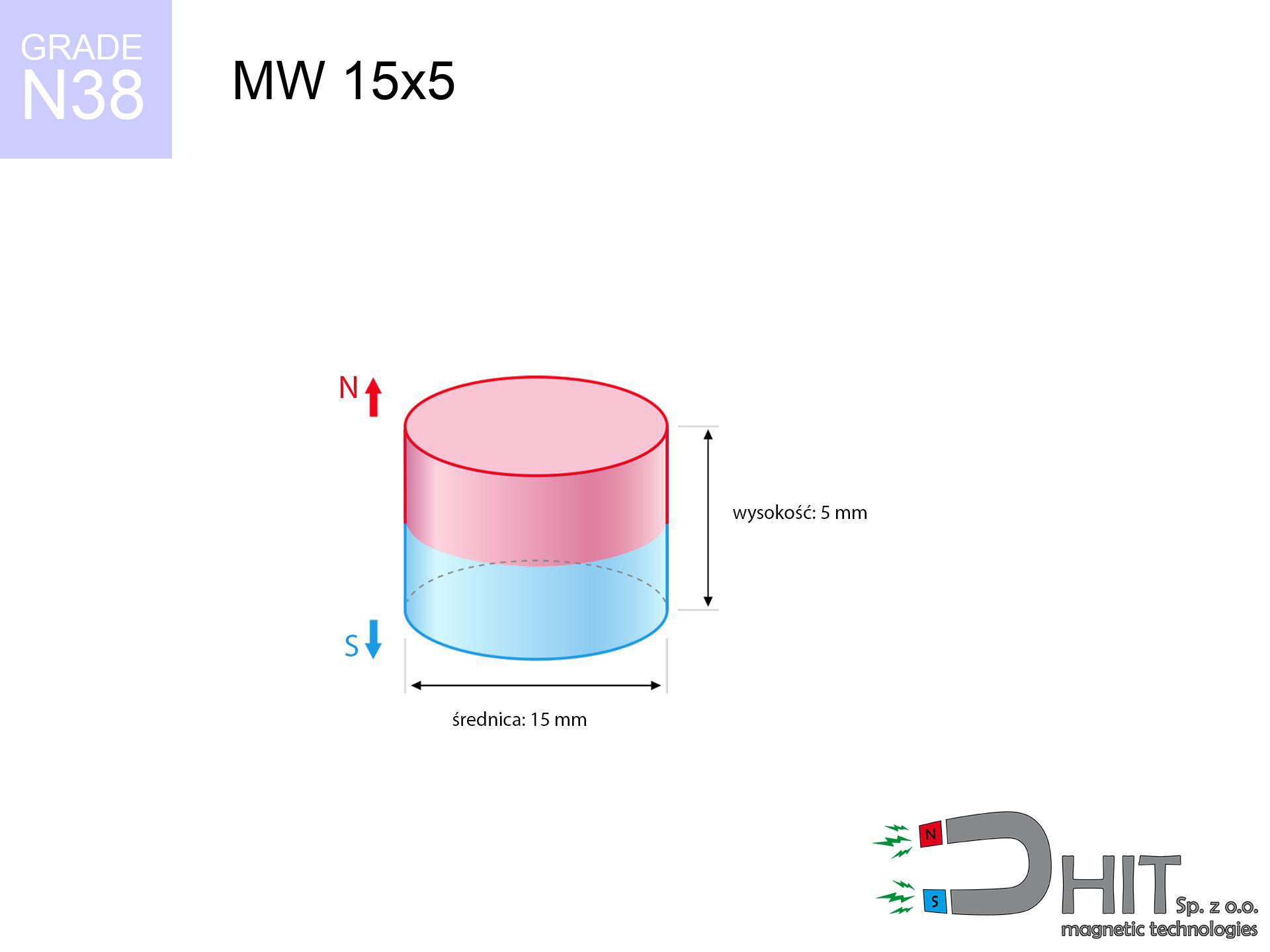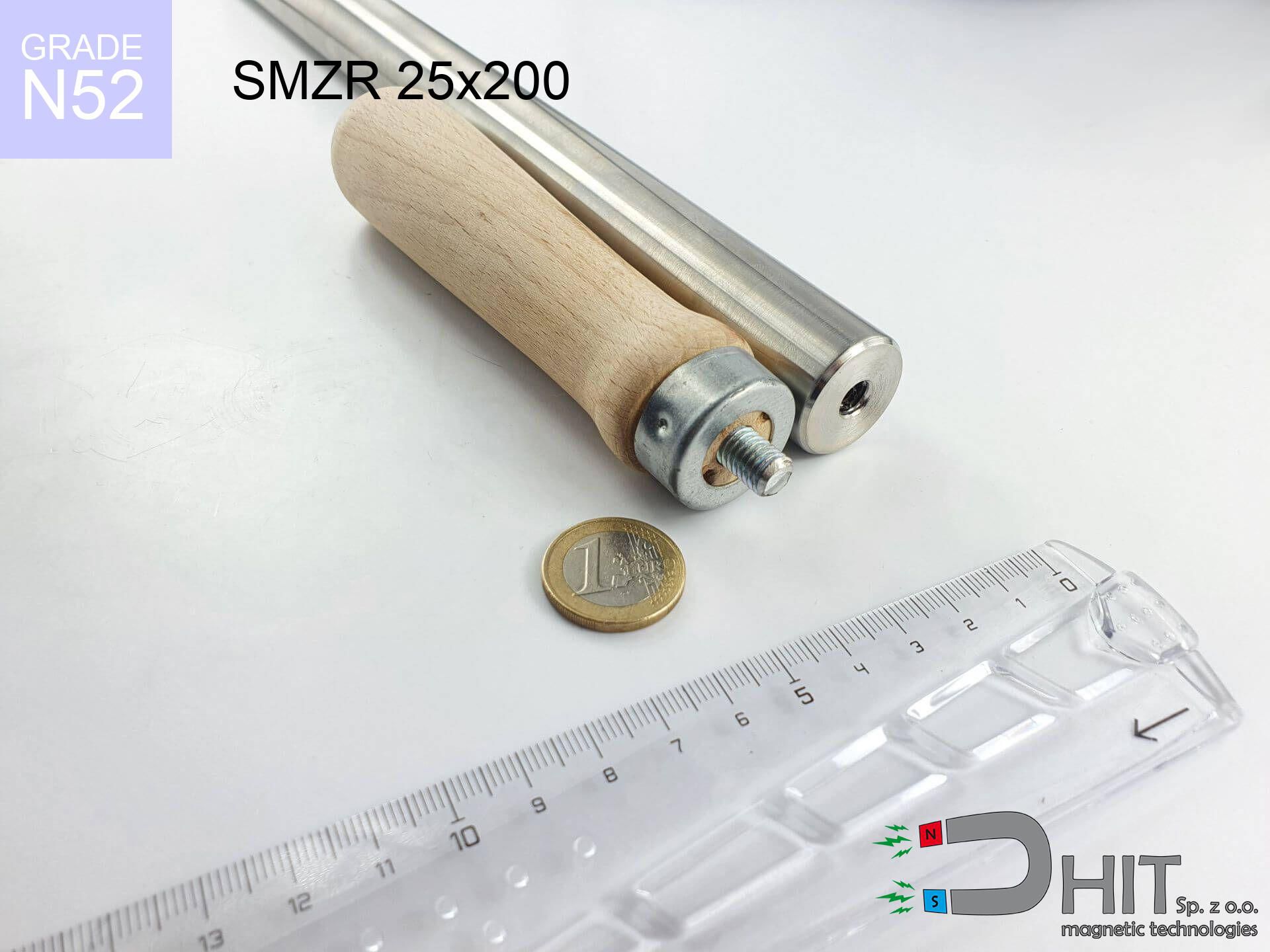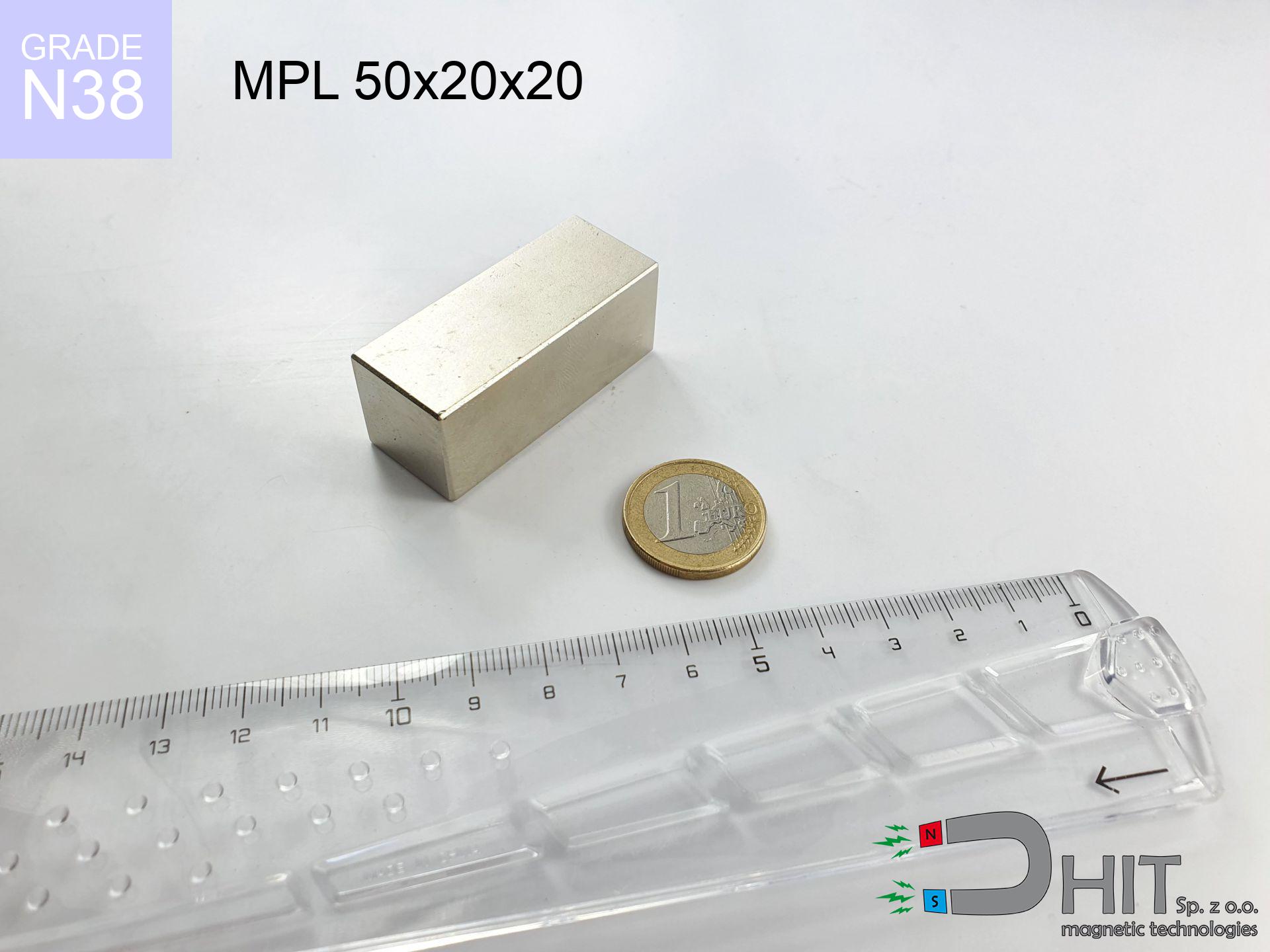MW 15x5 / N38 - neodymium magnet
cylindrical magnet
catalog number 010031
GTIN: 5906301810308
diameter Ø
15
mm [±0,1 mm]
height
5
mm [±0,1 mm]
magnetizing direction
↑ axial
capacity ~
4.15 kg / 40.70 N
magnetic induction ~
343.70 mT / 3,437 Gs
max. temperature
≤ 80
°C
catalog number 010031
GTIN: 5906301810308
diameter Ø
15 mm [±0,1 mm]
height
5 mm [±0,1 mm]
magnetizing direction
↑ axial
capacity ~
4.15 kg / 40.70 N
magnetic induction ~
343.70 mT / 3,437 Gs
max. temperature
≤ 80 °C
1.93 ZŁ gross price (including VAT) / pcs +
1.57 ZŁ net price + 23% VAT / pcs
bulk discounts:
need more quantity?Want to bargain?
Call us tel: +48 22 499 98 98 or get in touch via contact form on the contact page. You can check the mass and the shape of neodymium magnet in our magnetic calculator magnetic calculator
Orders placed by 2:00 PM will be shipped on the same business day.
Specification: cylindrical magnet 15x5 / N38 ↑ axial
Magnetic properties of the material N38
Physical properties of sintered neodymium magnets Nd2Fe14B
Moreover, even though neodymium is a component of the strongest magnets, they are prone to corrosion in humid environments. Therefore, they are coated with a coating of epoxy to increase their durability. It's worth noting that NdFeB neodymium magnets are about 13% lighter than SmCo magnets and, despite their power, are brittle, which requires special caution during their handling. Therefore, any mechanical processing should be done before they are magnetized.
In terms of safety, there are several recommendations regarding the use of these magnets. They should not be used in acidic, basic, organic environments or in solvents, and also in water or oil. Furthermore, they can distort data on magnetic cards and hard drives, although data deletion using a neodymium magnet is not guaranteed.
In terms of properties in different environments, neodymium magnets are sensitive to corrosion, especially in humid conditions. Therefore, they are often coated with coatings, such as gold, to shield them from external factors and extend their lifespan. High temperatures exceeding 130°C can cause a deterioration of their magnetic properties, although there are specific types of neodymium magnets that can withstand temperatures up to 230°C.
As for risks, it is important to avoid using neodymium magnets in acidic conditions, basic conditions, organic or solvent environments, unless they are insulated. Additionally, their use is not recommended in water, oil, or in an atmosphere containing hydrogen, as they may forfeit their magnetic strength.
List recommended items
Advantages and disadvantages of neodymium magnets NdFeB.
In addition to immense power, neodymium magnets have the following advantages:
- They do not lose their strength (of the magnet). After approximately 10 years, their power decreases by only ~1% (theoretically),
- They are highly resistant to demagnetization by external magnetic sources,
- By applying a shiny coating of nickel, gold, or silver, the element gains an aesthetic appearance,
- They have very high magnetic induction on the surface of the magnet,
- Magnetic neodymium magnets are characterized by very high magnetic induction on the surface of the magnet and can operate (depending on the shape) even at temperatures of 230°C or higher...
- The ability for precise shaping and customization to specific needs – neodymium magnets can be produced in various forms and dimensions, which amplifies their universality in usage.
- Wide application in advanced technologically fields – are utilized in computer drives, electric drive mechanisms, medical apparatus and very modern machines.
Disadvantages of neodymium magnets:
- They can break when subjected to a strong impact. If the magnets are exposed to impacts, we recommend using magnets in a steel housing. The steel housing in the form of a holder protects the magnet from impacts, and at the same time increases its overall strength,
- High temperatures can reduce the strength of neodymium magnets. Typically, after heating above 80°C, most of them experience a permanent loss in strength (although it is dependent on the form and size). To prevent this, we offer special magnets marked with the symbol [AH], which are highly resistant to high temperatures. They can operate even at temperatures up to 230°C, making them an ideal solution for applications requiring high-temperature operation,
- Due to their susceptibility to corrosion in a humid environment, we suggest using waterproof magnets made of rubber, plastic, or other moisture-resistant materials when using them outdoors,
- The use of a cover - a magnetic holder is recommended due to the limited production capabilities of creating threads or complex shapes in the magnet
- Potential hazard arising from small pieces of magnets are risky, if swallowed, which becomes significant in the context of children's health. Additionally, miniscule components of these devices are able to hinder the diagnostic process in case of swallowing.
Precautions
Neodymium magnets are the strongest magnets ever created, and their strength can surprise you.
To handle magnets properly, it is best to familiarize yourself with our information beforehand. This will help you avoid significant harm to your body and the magnets themselves.
Neodymium magnetic are fragile as well as can easily break as well as get damaged.
Neodymium magnets are fragile and will crack if allowed to collide with each other, even from a distance of a few centimeters. Despite being made of metal and coated with a shiny nickel plating, they are not as hard as steel. In the case of a collision between two magnets, there can be a scattering of small sharp metal fragments in different directions. Protecting your eyes is essential.
Never bring neodymium magnets close to a phone and GPS.
Neodymium magnets are a source of strong magnetic fields that cause interference with magnetometers and compasses used in navigation, as well as internal compasses of smartphones and GPS devices.
Keep neodymium magnets away from TV, wallet, and computer HDD.
Magnetic fields generated by neodymium magnets can damage magnetic storage media such as floppy disks, credit cards, magnetic ID cards, cassette tapes, video tapes, or other similar devices. In addition, they can damage televisions, VCRs, computer monitors, and CRT displays. You should especially avoid placing neodymium magnets near electronic devices.
Dust and powder from neodymium magnets are flammable.
Avoid drilling or mechanical processing of neodymium magnets. If the magnet is crushed into fine powder or dust, it becomes highly flammable.
Magnets will attract to each other, so remember not to allow them to pinch together without control or place your fingers in their path.
Magnets will attract each other within a distance of several to about 10 cm from each other. Remember not to place fingers between magnets or alternatively in their path when they attract. Depending on how large the neodymium magnets are, they can lead to a cut or a fracture.
The magnet is coated with nickel. Therefore, exercise caution if you have an allergy.
Studies clearly indicate a small percentage of people who suffer from metal allergies such as nickel. An allergic reaction often manifests as skin redness and rash. If you have a nickel allergy, try wearing gloves or avoid direct contact with nickel-plated neodymium magnets.
Keep neodymium magnets away from people with pacemakers.
Neodymium magnets generate strong magnetic fields. As a result, they interfere with the operation of a pacemaker. This is because many of these devices are equipped with a function that deactivates the device in a magnetic field.
Neodymium magnets can demagnetize at high temperatures.
Although magnets have shown to retain their effectiveness up to 80°C or 175°F, this temperature may vary depending on the type of material, shape, and intended use of the magnet.
Do not give neodymium magnets to youngest children.
Remember that neodymium magnets are not toys. Do not allow children to play with them. Small magnets can pose a serious choking hazard. If multiple magnets are swallowed, they can attract to each other through the intestinal walls, causing significant injuries, and even death.
Please see the article - What danger lies in neodymium magnets? You will learn how to handle them properly.



![search holder 107x40 [M8+M10] GW F 400 kg / N38 search holder 107x40 [M8+M10] GW F 400 kg / N38](https://cdn3.dhit.pl/graphics/products/ump107x40-m8+m10-gw-f-400-kg-mup.jpg)


![magnetic beam 550x180x70 [4x M8] magnetic beam 550x180x70 [4x M8]](https://cdn3.dhit.pl/graphics/products/bm-550x180x70-4x-m8-nic.jpg)

